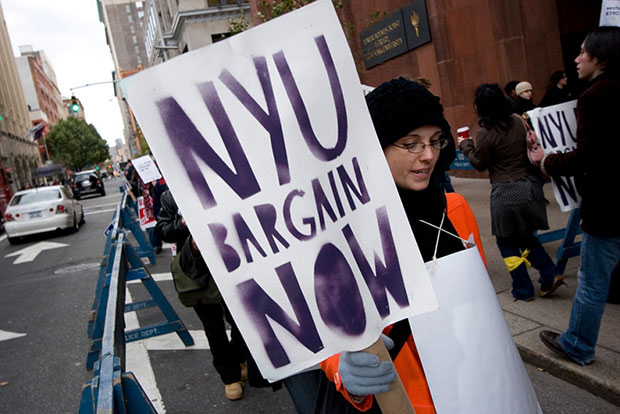If We Are Serious About Building Powerful Unions, We Must Look to the Rank and File

BY Sean Larson and Natasha Raheja
This article was first posted at Jacobin.
The union has come to dwell in higher education. As graduate employees face increasing precarity, rising workloads, and low job prospects, the opportunity to join the union movement is a source of immense pride and a beacon of hope. Under a Trump presidency, building rank-and-file power will be especially important in offering a way forward for graduate workers to stand up to corporate university administrations and to fight anti-labor legislation more broadly.
In the wake of the August NLRB ruling in favor of graduate workers’ organizing rights, tens of thousands of graduate assistants are now organizing union campaigns in their university workplaces. The United Auto Workers (UAW) has been a major player in graduate unionization efforts of recent years, but its dominant organizing strategies have been subject to extensive critique by many grad workers organized within the Academic Workers for a Democratic Union (AWDU) caucus across the country.
Despite the origins of the UAW among dissidents in the radical labor upsurges of the 1930s, the vibrant history of the union has been marred by repeated suppression of reform movements within the union ranks by the Administration Caucus, the longtime ruling faction within the union. As the UAW has branched into higher education, this repressive legacy has manifested anew in attempts to discredit AWDU reform efforts.
For the full article, click on the link below.
[Source]: InTheseTimes.com


